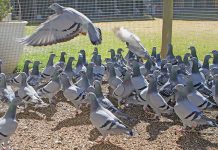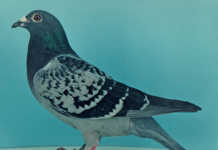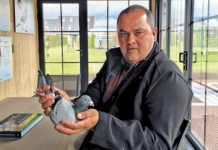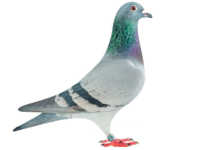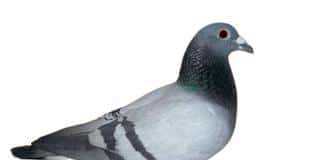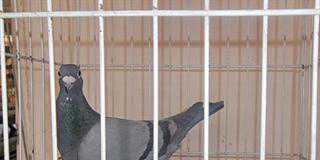While I was still a novice fancier, a champion racer told me that a good long-distance pigeon ‘knows’ how to pace itself and does not burn up its reserves of energy early in the race. “Such pigeons,” he said, “race at a steady pace.’’ “But isn’t that exactly the definition of a plodder?” I asked. “No,” said my friend, “a plodder doesn’t ‘know’ how to pace itself.”
In other words, a plodder is a slower bird that cannot keep up with the others. It also tends to lose its way. The smarter pigeon, by contrast, ‘knows’ when it’s on course. It is more in touch with the environment and will take the shortest route home. It also has a calmer temperament and does not panic in unknown territory. It senses when it is heading home and, as mentioned, marshals its energy reserves accordingly.

The comfortable flying velocity of this pigeon will generally be slower due to the gaps between the flight feathers that cause the wings to take less air with the down stroke while in flight. (Pigeon owned and modelled by Richard Salt)
Definition
This brings us to the concept of ‘comfortable flying velocity’ (CFV). This can be defined as the “speed with which a pigeon will fly home on a clear, windless, temperate day with no exterior influences and before fatigue sets in,” says
Dr Wim Peters, an experienced South African vet and champion pigeon fancier.
He adds that a consistent front-runner usually has a faster overall CFV, but sometimes the winning pigeon may simply have found a more direct route home. “Small deviations in a route can lead to a few metres’ difference in the eventual velocity, as when half the pack goes left around a tree, while the others go right, and the two groups never meet up again.”
The realities of racing
Is it only once the pigeons have settled in a pack after liberation that the birds fly at CFV? I ask Wim. In other words, do they gain momentum while in flight, as we would shift to fifth gear on a motorway? “No,” says Wim, “the CFV remains the same, but the flying speed varies according to circumstances such as the weather. If there’s no wind, for example, the CFV of the frontrunners determines the speed of the pack. Pigeons that can’t keep up with the speed of the pack fall behind.”
As already described, a bird’s CFV is a mean average based on ideal flying conditions. In a race, other factors come into play, causing some pigeons to surge ahead and others to fall behind. Thus the velocity will remain the same, but the actual speed will vary. If the pigeon is unfit, overweight or injured, its CFV will be negatively affected.
Phone Thomas Smit on 011 680 4778.


